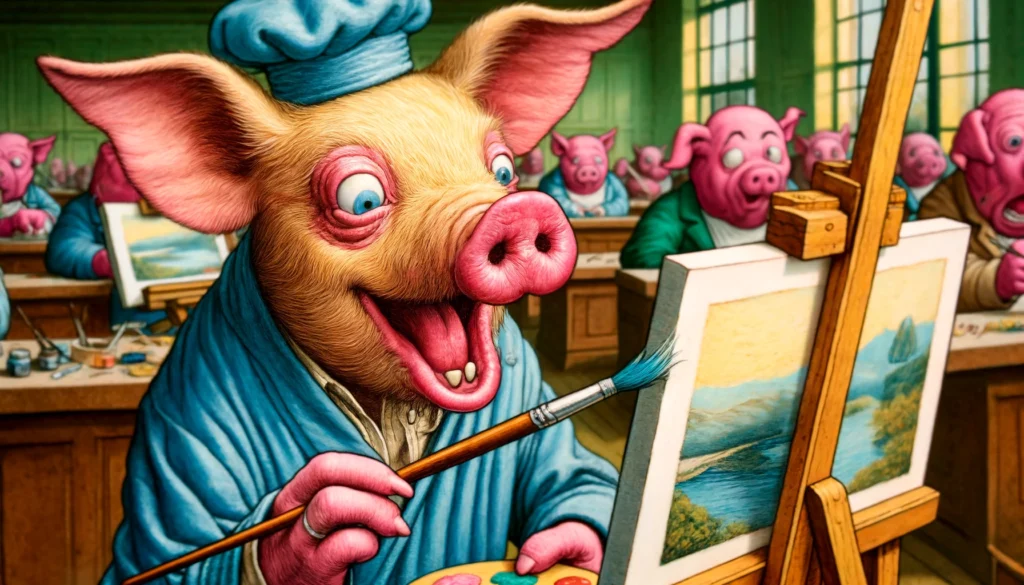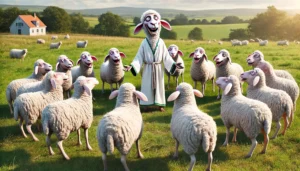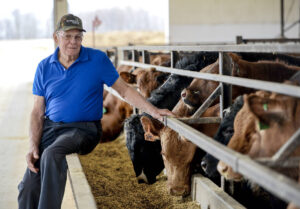
FarmerCowboy.com USA 2024 04 29 20.10.34 A vibrant detailed close up illustration of a painting pig from the previous scene depicted in a whimsical and exaggerated style. The pig4.webp.webp
When Pigs Fly? No, But They Do Paint
And the Art World is All Mud About It
In a world where reality often outstrips the imagination, a new chapter has been added to the annals of artistic absurdity. Welcome to the era of the painting pigs—a phenomenon that’s making waves, or more accurately, splashes of mud, across the global art scene.
The Rise of the Pigment Masters
It began in a humble farmyard where the farmer, seeking to entertain his porcine pals, left out some paint cans and brushes. By morning, the sty was transformed into a surreal studio, the pigs having swapped slops for swatches. The farmer, sensing opportunity, posted pictures of the muddy masterpieces online, and thus began the swine sensation.
Art critics, initially skeptical, rushed to the scene. Renowned critic Jasper Monocle peered over his glasses, remarking, “I’ve seen modern art, but this is the first time it’s looked back at me with a snout.” The paintings—a vibrant mix of abstract expressionism and accidental genius—were soon dubbed “Impressionist Impasto” and “Baroque Bacon” by amused observers.
Critical Acclaim and Public Confusion
“It’s a refreshing twist on farm-to-table—it’s farm-to-gallery,” quipped socialite and occasional art buyer, Beatrice Lushwell, who purchased what she believed to be an avant-garde piece, only to discover it was just a dirty tarp. The art world hasn’t been this confused since someone mistook an unmade bed for a sculpture.
At a recently held auction, a piece titled “Mudslide Melancholy” sold for an eye-watering sum, prompting economic analysts to note the inflationary trends in unconventional art. “Investing in stocks is less about bulls and bears now, and more about pigs with flair,” commented Wall Street guru, Gordon Z. Lot.

Social Impact and Environmental Footprints
The trend has also sparked a flurry of social commentary. Environmentalists laud the eco-friendly nature of using organic materials like mud and slop, though there are concerns about the carbon footprint of flying these pig artists to international galleries.
Political analysts have weighed in, with one noting, “If a pig can influence the art market, surely it can run for office. In some cases, it might be an improvement.” This sentiment was echoed in a recent poll where 62% of respondents believed the pigs’ work conveyed more honesty than the last political campaign ads they’d seen.
The Educational Spin-Offs and Commercial Ventures
With popularity soaring, there’s talk of launching an educational series for children, “Pablo Pig-casso Teaches Art,” aimed at encouraging creativity and perhaps inadvertently, messiness. Moreover, an art school for aspiring pig painters is in the works, promising courses like “Advanced Oinking Techniques” and “Mud Mixology.”
Commercial interests have piggybacked on the trend, with one luxury brand launching a line of “Artisanal Mud Masks,” inspired by the pigs’ palette. These have become a hit in spas seeking to offer novel experiences to clientele eager for the next big thing in skin care.

Artistic Integrity or Just Plain Hogwash?
Despite the enthusiasm, some critics question the legitimacy of attributing artistic intent to the pigs. Ethologist Dr. Hamish Snoutwell, in his recent study, suggests, “The pigs are likely just engaging in natural rooting behaviors, albeit with unusually colorful results.” He adds, “To call it art is to stretch the definition, possibly to breaking point.”
Yet, the public seems enamored with the notion. Art enthusiast and frequent gallery-goer, Ima Gullible, comments, “There’s something profoundly moving about seeing a creature express itself with such raw, unfiltered joy. Or maybe it’s just funny to think there’s a pig out there who’s a better artist than I could ever be.”
Looking to the Future: The Next Big Splash
As the painting pigs continue to captivate and confound, the art world watches with bated breath. What’s next for these porcine Picassos? A themed exhibit, “The Whole Hog,” is already in the planning stages, promising to showcase the best of their barnyard brushwork.
Economists predict this swine-centered art movement could represent a new, lucrative niche for investors. Meanwhile, educators hope it inspires a generation less afraid of getting their hands dirty—literally.
Conclusion: A Cultural Phenomenon That’s Here to Stay
The Peculiar Case of the Painting Pigs is more than just a fleeting oddity; it’s a cultural phenomenon that challenges our perceptions of art, creativity, and perhaps the very essence of intentionality. Whether it’s seen as a stroke of genius or just a happy accident, one thing is clear: the art world has gone hog wild, and there’s no putting the paint back in the can.

Educational Observations:
The Peculiar Case of the Painting Pigs: Art Critics Stunned
- Artistic Oinkers: It turns out the term “pigment” was actually a misspelling all along. It should have been “pig-ment,” considering our new porcine Picassos.
- Critic Confusion: One art critic, upon seeing the paintings, whispered in awe, “I always knew abstract art was hogwash, but this is literal!”
- Swine Sty-les: These pigs aren’t just throwing mud around; they’re expressing themselves in styles we’ve decided to call “Impressionist Impasto” and “Baroque Bacon.”
- Market Mix-up: At the latest art auction, two pigs went for a Monet painting… because it was covered in corn.
- Pig Palette: The preferred colors? Mud brown, slop yellow, and truffle black. Critics are still debating whether it’s a limited palette or just the pigs being picky eaters.
- Snout Brushes: Brushes are so last century. Today’s true artist uses a more organic approach: the snout.
- Gallery Goers: The new art gallery show, “Swine and Dine,” is unique—you can critique the art, then eat the critic.
- Muddy Masterpieces: One pig painted a piece so abstract that when it sold for a million, the buyer actually bought a mud puddle by mistake.
- Art School: There’s talk of opening an art school for pigs. Tuition includes three buckets of slop and unlimited mud baths.
- Fame on the Farm: One of the pigs has become such a diva, it refuses to wallow in any mud that hasn’t been imported from Tuscany.
- Abstract or Accident?: Half of the art critics argue the paintings are a profound statement on animal cognition; the other half think the pigs just tripped into some paint cans.
- Brush vs. Bacon: In a confusing mix-up, one gallery served canapés on tiny easels. Three paintings were eaten before anyone noticed.
- Sudden Stardom: One of the painting pigs was signed by an agent. Now, it’s only doing high-profile mud commercials.
- Investment Advice: Financial tip: Invest in art they said. It’s less risky they said. Now my best piece is a landscape by Larry the Hog.
- Exhibition Excitement: The next big exhibit is expected to be a smash—or a splash, depending on how excited the artists get.
Disclaimer:
This story is the result of a collaborative effort between two of the most imaginative minds of our time—a farmer and a cowboy. Any resemblance to actual events, locales, or a pig that can paint better than you, is purely coincidental and should be taken with a pinch of salt… or perhaps a splash of mud.
Painting Pigs: The Art








Originally posted 2015-12-02 23:58:33.
Originally Published at FarmerCowboy.com
2024-11-23 23:44:27
Karl Hoffman is a distinguished agriculturalist with over four decades of experience in sustainable farming practices. He holds a Ph.D. in Agronomy from Cornell University and has made significant contributions as a professor at Iowa State University. Hoffman’s groundbreaking research on integrated pest management and soil health has revolutionized modern agriculture. As a respected farm journalist, his column “Field Notes with Karl Hoffman” and his blog “The Modern Farmer” provide insightful, practical advice to a global audience. Hoffman’s work with the USDA and the United Nations FAO has enhanced food security worldwide. His awards include the USDA’s Distinguished Service Award and the World Food Prize, reflecting his profound impact on agriculture and sustainability.




